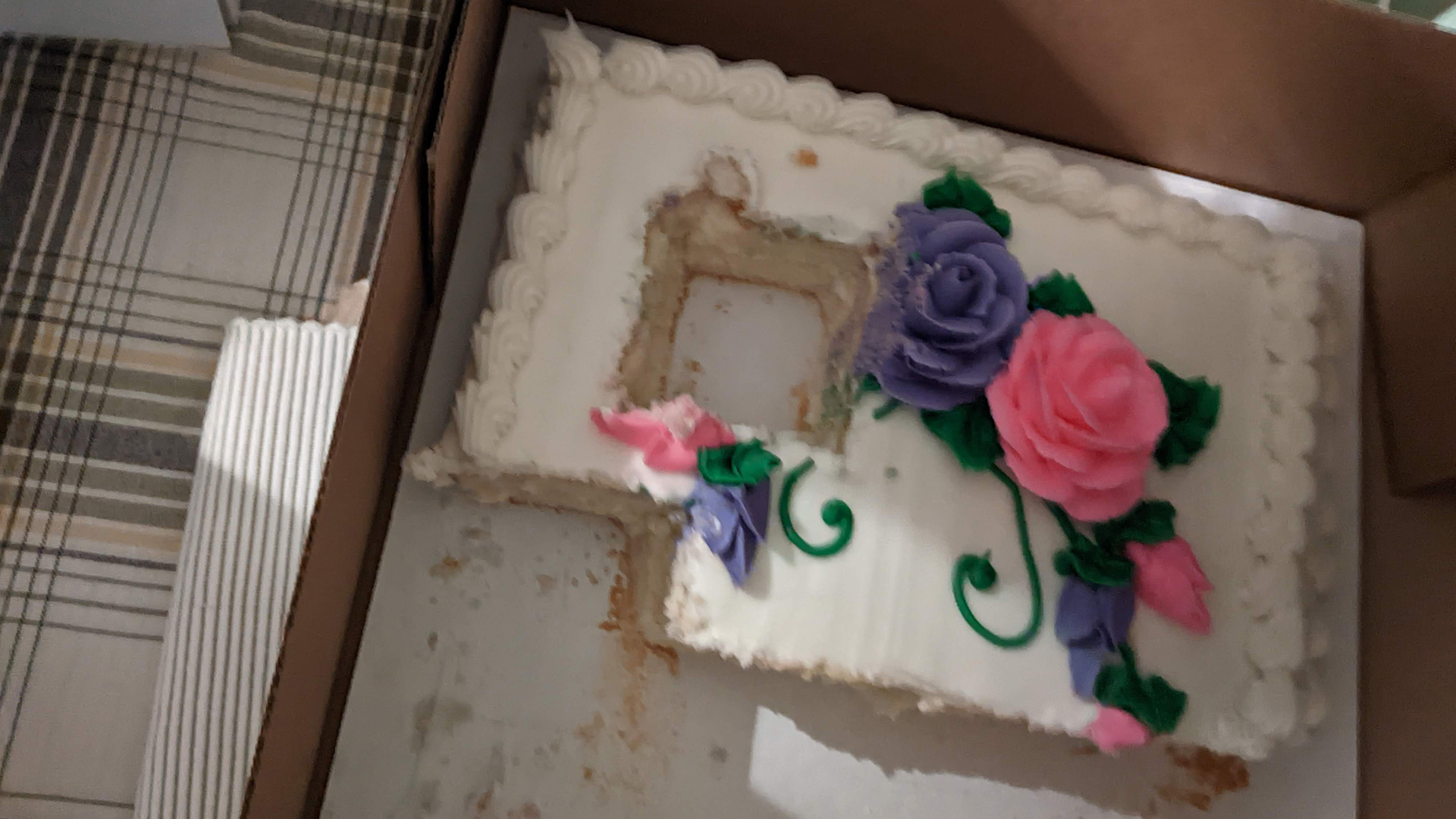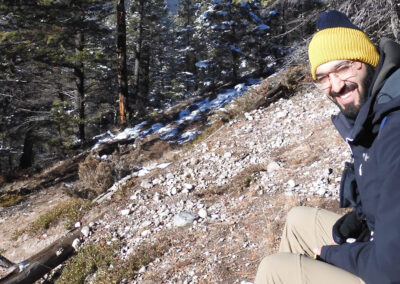Autism awareness from a caregiver’s perspective
Finding empathy, understanding and humour at a funeral
ARTICLE BY Andrea Brunton
Thank you, Greg, for giving me permission to write this article and for reviewing it once it was complete. This article has had many proofreaders, but your approval means the most.
This past January, I attended my grandmother’s funeral with my family, which includes my 31-year-old brother Greg. Greg is a social, compassionate, thoughtful, funny, and inquisitive man, who also happens to be on the autism spectrum. After the funeral, there was a gathering at my aunt’s house that included a cake, which Greg had his eye on. Unbeknownst to us, Greg wanted a piece of cake with a rose on it, and so he waited in patient silence for everyone else to take a slice, hoping for that moment when the edge of a rose was exposed. But, alas, that moment never came. So, Greg, ever the problem solver, took matters into his own hands, and -with surprising precision- cut a rose piece right out of the centre of the cake.

When I later walked into the kitchen and saw the surgically cut hole, I immediately burst out laughing. I did not need to be told what happened, who did it, or why; context provided every clue I needed. But then I found myself facing a familiar question: should I explain to him that this behaviour breaks from social etiquette? Is it inherently problematic behaviour? Certainly not. Will anyone at this gathering of family members be offended? Most definitely not. But outside of context of familial understanding, would this be acceptable at a post-funeral gathering? Hmmm…..
Moreover, how would I explain to him that this is not the way to behave at social gatherings. An entirely reasonable question back would be “but why?” and quite frankly I don’t have a logical answer; I have a social one. Most of us were never explicitly taught not to cut straight out of the centre of a cake, but while growing up we learned many unspoken social cues that translate to other areas of our lives, including cake cutting. It must be exhausting having to be explicitly taught so many more norms and behaviours than most people, and I think of this when I consider whether it is worth explaining to him appropriate cake cutting behaviour. But, on the other hand, I consider that it must be even more exhausting to face people in everyday life that are dismissive, insulting, fearful, or downright threatening because you missed some secret social signal the rest of us perceived.
I know when I take Greg out in public, I am constantly performing a balancing act of blending into social conventions and letting him live his life. I find myself debating when to step in as he insists on paying for everything in exact change from two separate wallets (one for bills, one for coins), regardless of how long the lineup is or how stressed the cashier looks. Or how to respond when he interrupts a man telling a story about his tour in Afghanistan, only to ask what time we are leaving for the cottage on Friday. All the while, I find myself silently hoping that observant individuals will understand. Not everyone is attuned or sensitive to recognizing Greg’s disability, or my role in these moments as a caregiver.
I take solace in knowing that I am not alone in facing these challenges. Research has revealed that many caregivers, particularly parents, often feel shame or embarrassment related to their child’s disability, and certainly a lack of understanding from the public doesn’t help. This can manifest in many ways, but most frequently I notice when people react with judgement, unease, or fear, which makes the world all that much smaller for the many harmless, neurodivergent individuals just trying to find their place.
One method of communication my parents embraced – and I would like to think I’ve continued after our father passed – is finding and sharing humour in the everyday challenges. In fact, humour is my favourite communication strategy, because it allows me to tell engaging stories about Greg – and with Greg – that let people see how the fullness of his personality coexists with his disability. If I can tell our stories in a way that inspires curiosity and laughter, rather than sympathy and silence, then I feel I have done right by him. Of course, humour is only one tool in the communication toolkit, and different strategies will work for different people. Regardless of how we have these conversations, the more we can discuss the challenges that accompany disability without characterizing them as inherently burdensome, the easier it will be to see how each person’s humanity intersects with their disability, and the better off we will all be for it.
Of course, I have had my fair share of moments of thinning patience. After one particularly long day in Toronto this past December, I was taking Greg home on the subway, and ushered him into the first free seat I could find. As soon as I sat him down, the person beside him looked at me and indicated they needed to get up. No problem, I thought. “Okay, Greg, you gotta get up.” Nothing. “Get up so they can get out.” Still nothing. So, the transit rider did what any well-seasoned transit rider would do: awkwardly squeezed past and ran so as to not miss their stop. I looked at Greg with a deadpan stare and said, “Well, alright then….” with apparently enough exasperation to make an adjacent rider burst out laughing. They looked at me with a look of understanding, unintentionally reminding me of my own adage to not let the little things get to me. Maybe they were a caregiver too, I will never know, but what I do know is in a moment where I had lost my levity, they found it for me, and I was better off for it.
Find out how our team can help your organization
Related insights



Toronto
366 Adelaide Street West
Suite 101, Toronto, ON
Canada M5V 1R9
416 920 9010
Ottawa
135 Laurier Ave W.
Ottawa, ON
Canada K1P 5J2
613 230 5089
Calgary
421 7th Ave SW
Suite 3000, Calgary, AB
Canada T2P 4K9
403 613 5735
